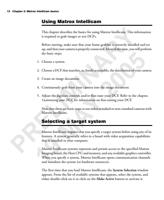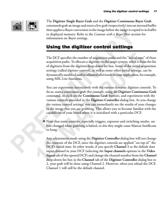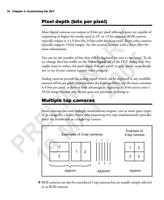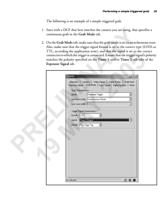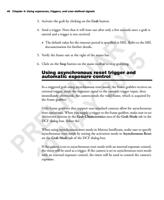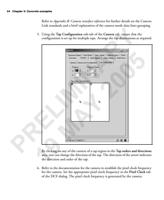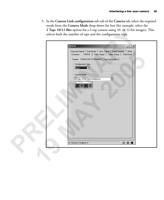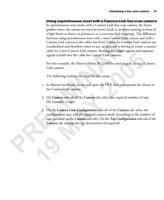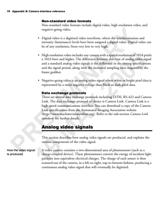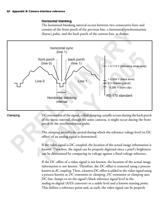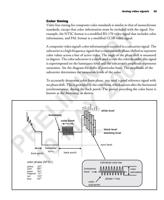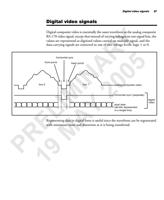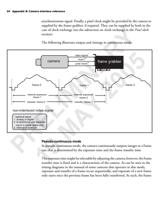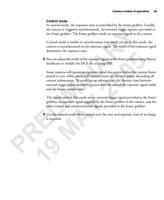
82 Appendix B: Camera interface reference
Horizontal blanking
The horizontal blanking interval occurs between two consecutive lines and
consists of the front porch of the previous line, a horizontal synchronization
PRE19LIMMAINYA2R0Y05 Clamping
(hsync) pulse, and the back porch of the current line, as shown:
horizontal sync
(line 1)
front porch
(line 0)
back porch
(line 1)
Line 0
Line 1
Horizontal blanking
interval
+ 0.714 V (reference white level)
+ 0.054 V (black level)
0 V (blanking level)
- 0.286 V (sync clip)
RS-170 standard
DC restoration of the signal, called clamping, usually occurs during the back porch
of the hsync interval, though for some cameras, it might occur during the front
porch in the synchronization pulse.
The clamping period is the period during which the reference voltage level (or DC
offset) of an analog signal is determined.
If the video signal is DC-coupled, the location of the actual image information is
known. Therefore, the signal can be properly digitized since a pixel's brightness
can be determined by comparing its voltage against a fixed voltage reference.
If the DC offset of a video signal is not known, the location of the actual image
information is not known. Therefore, the DC offset is removed using a process
known as AC coupling. Then, a known DC offset is added to the video signal using
a process known as DC restoration or clamping. DC restoration or clamping uses
DC line clamps to set the signal's black reference signal level in the
analog-to-digital (A/D) converter to a stable level and a known starting point.
This defines a reference point and, as such, the video signal can be properly












